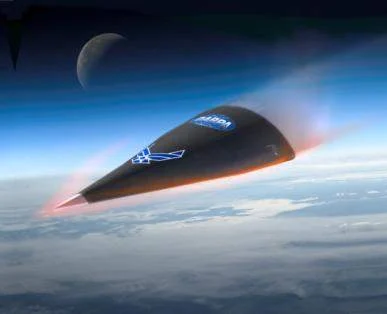The Pentagon lost contact with the Falcon HTV-2 as it attempted to conduct a hypersonic test flight over the Pacific Ocean.
After successfully launching from Vandenberg Air Force base in California, the HTV-2 separated from the Minotaur IV rocket at a sub-orbital altitude and began its return to Earth.

All seemed well until the billion dollar aircraft went silent during the gliding stage of the flight – when it was slated to fly above the Pacific at 20 times the speed of sound (13,000 mph), or Mach 20 in a series of complex maneuvers.
“Range assets have lost telemetry with #HTV2,” the US Defense Advance Research Projects Agency (DARPA) confirmed on its official Twitter account.
“Downrange assets did not reacquire tracking or telemetry. #HTV2 has an autonomous flight termination capability. More to follow.”
The original plan was for the Falcon to fly westward for 30 minutes before landing gracefully in the ocean near Kwajalein Atoll, approximately 4,000 miles from Vandenberg.
A fully-functioning Falcon HTV-2 could theoretically travel from New York to LA in just 12 minutes and from London Sydney in less than an hour.
The Pentagon only built two Falcon prototypes and it is uncertain if any more of the experimental crafts will be manufactured.
The predecessor to the HTV-2 – the HTV-1 – was unceremoniously flown into the ocean last April when DARPA detected a glitch and ditched the craft as a precautionary measure.
Update: DARPA has issued an official statement about the Falcon HTV-2.
Air Force Maj. Chris Schulz, DARPA HTV-2 program manager and PhD in aerospace engineering:
“Here’s what we know. We know how to boost the aircraft to near space. We know how to insert the aircraft into atmospheric hypersonic flight. We do not yet know how to achieve the desired control during the aerodynamic phase of flight. It’s vexing; I’m confident there is a solution. We have to find it.
“To address these obstacles, DARPA has assembled a team of experts that will analyze the flight data collected during today’s test flight, expanding our technical understanding of this incredibly harsh flight regime. As today’s flight indicates, high-Mach flight in the atmosphere is virtually uncharted territory. “
DARPA Director Regina Dugan:
“Prior to flight, the technical team completed the most sophisticated simulations and extensive wind tunnel tests possible. But these ground tests have not yielded the necessary knowledge. Filling the gaps in our understanding of hypersonic flight in this demanding regime requires that we be willing to fly. In the April 2010 test, we obtained four times the amount of data previously available at these speeds. Today more than 20 air, land, sea and space data collection systems were operational. We’ll learn. We’ll try again. That’s what it takes.”






